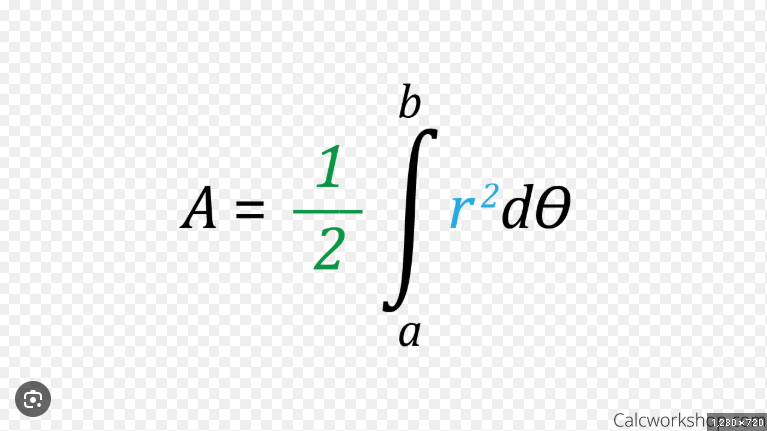Math Equations to Memorize
1/16
There's no tags or description
Looks like no tags are added yet.
Name | Mastery | Learn | Test | Matching | Spaced |
|---|
No study sessions yet.
17 Terms
Area Between Two Curves
A=∫ba[f(x)−g(x)]dx, if using y-axis, use y-coords in integral
Method of Discs & Washers
Or integral from a to b pi times f(x)², if hole between graph and function use washer method, or integral from a to b pi times outer - inner, both squared. For this and all others besides shells, axis matches values on the integral
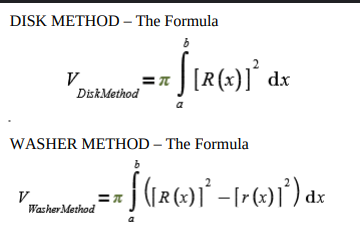
Method of Cylindrical Shells
For x-axis: Integral from c to d(2pi*y(f(x))
For y-axis: Integral from a to b(2pi*x(g(y)))
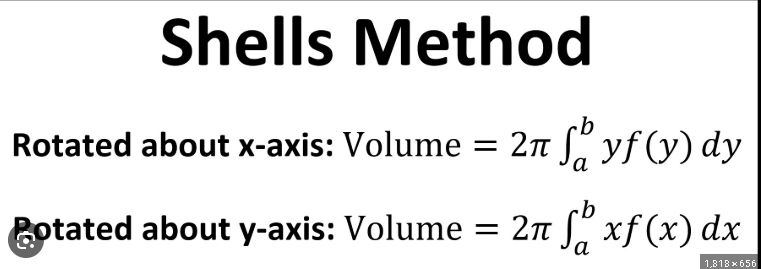
Arc Length
Matches axis of rotation,
x-axis: Integral from a to b(sqrt[1+(f’(x))²])
y-axis: Integral from c to d(sqrt[1+(g’(y))²]
![<p>Matches axis of rotation,</p><p>x-axis: Integral from a to b(sqrt[1+(f’(x))²])</p><p>y-axis: Integral from c to d(sqrt[1+(g’(y))²]</p>](https://knowt-user-attachments.s3.amazonaws.com/69a96499-3517-463b-a9f2-b3a3a521de83.png)
Surface Area
Matches axis of rotation,
x-axis: Integral from a to b(2pi(f(x)) * sqrt[1+(f’(x))²])
y-axis: Integral from c to d(2pi(g(y)) * sqrt[1+(g’(y))²])
Integration by Parts
Remember LIATE, log, inverse trig, algebraic, trig, exponential
Select the u to be LIATE determination
Integral of u dv = u*v - integral(v du)
Each part is an actual value, u and dv are in the first equation, du is derived u, and v is integrated dv. (dv includes the dx term)

Trig Integral Important Identities
The following identities are important
sin²x + cos²x = 1
sin²x = (1-cos2x)/2
cos²x = (1+cos2x)/2
sec²x - tan²x = 1
csc²x - cot²x = 1
Trig Substitutions
Look under the square root, find which forms match
a²-x²; set x = a*sin(theta)
a²+x²; set x = a*tan(theta) (Cross in + and t)
x²-a²; set x = a*sec(theta) (A is SECond)
Use the original form of x = a*trig(theta), solve for theta and plug into a triangle. Solve for x
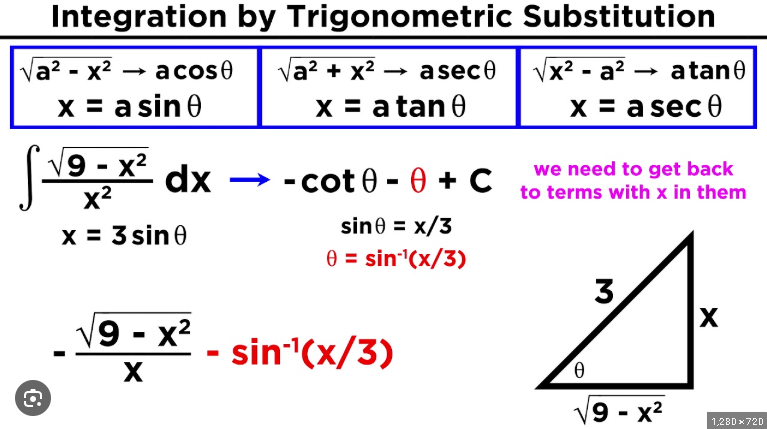
Improper Integrals
Take the bad part (inf or DNE part of domain) and set a lim and L.
If DNE is in middle of domain, like x = 1 DNE and domain is [0,3] split into two integrals and use lim thing for both, approaching from the side the function exists.
Separable Diff EQ
Get the dy and dx on isolated side with the terms with that variable, then integrate both sides
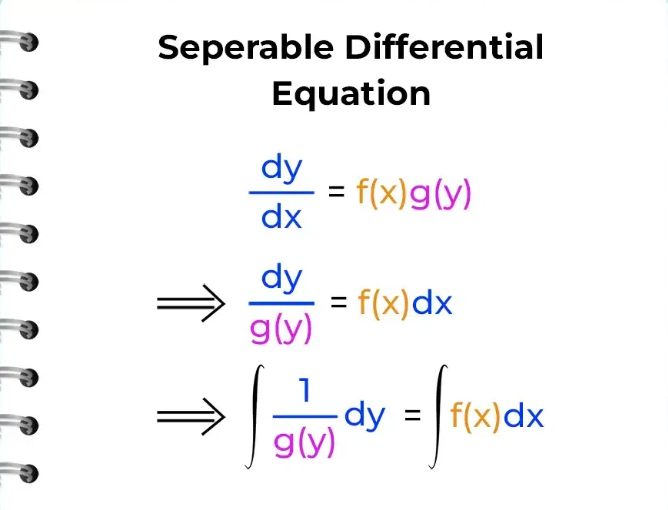
First order Linear
Will be in the form y’ + P(x)y = Q(x), if not need to get it into this form
When in the form, set u = e^integral(P(x)), then multiply the whole thing by mew
When this is done, a product rule is made. Set up du/dx (u = the e^ thing) and solve by integrating both sides.
You’ll end up with a C, if IVP use the values to figure out C
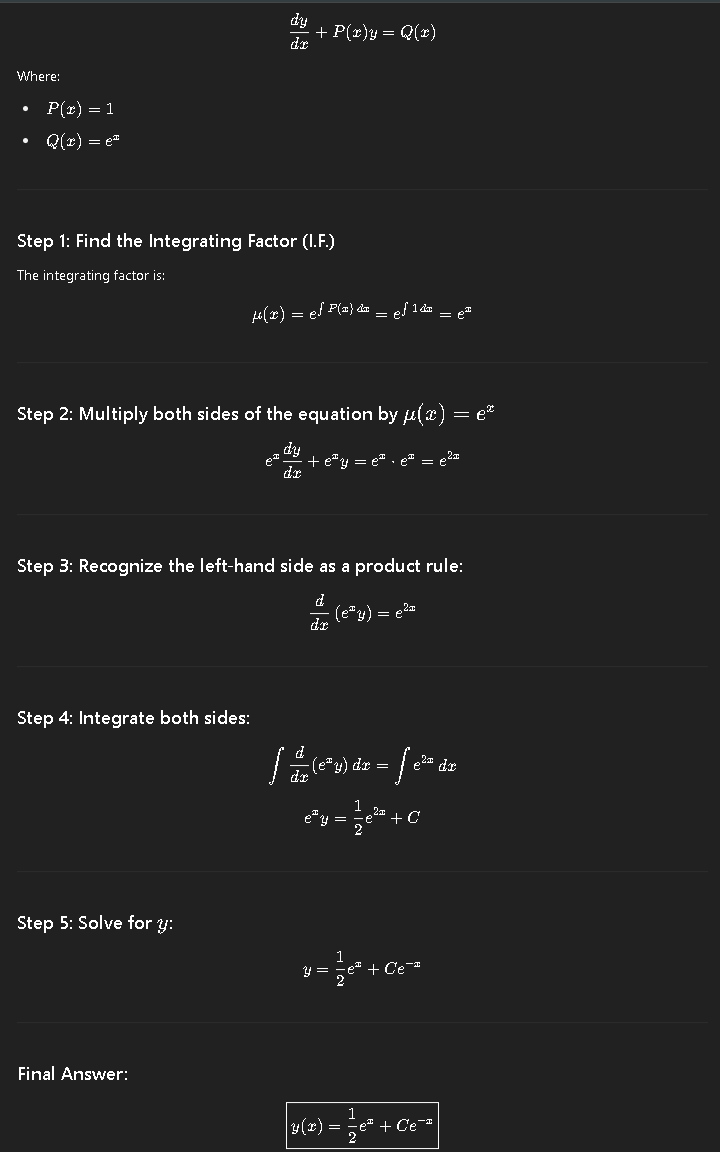
Parametric Curve derivative
C’ = dy/dt / dt/dx, basically y’ / x’, x and y are give by C: (x,y)
Arc Length of Parametric Curve (In form C: (x,y))
L = integral from a to b(sqrt[(x prime)²+(y prime)²] dt
Basically Integral from a to be for the square root of the derivatives added and squared
![<p>L = integral from a to b(sqrt[(x prime)²+(y prime)²] dt</p><p>Basically Integral from a to be for the square root of the derivatives added and squared </p>](https://knowt-user-attachments.s3.amazonaws.com/a9f754d4-8c3a-49e8-a62e-625c700f6c06.png)
Surface Area for Parametric Curves
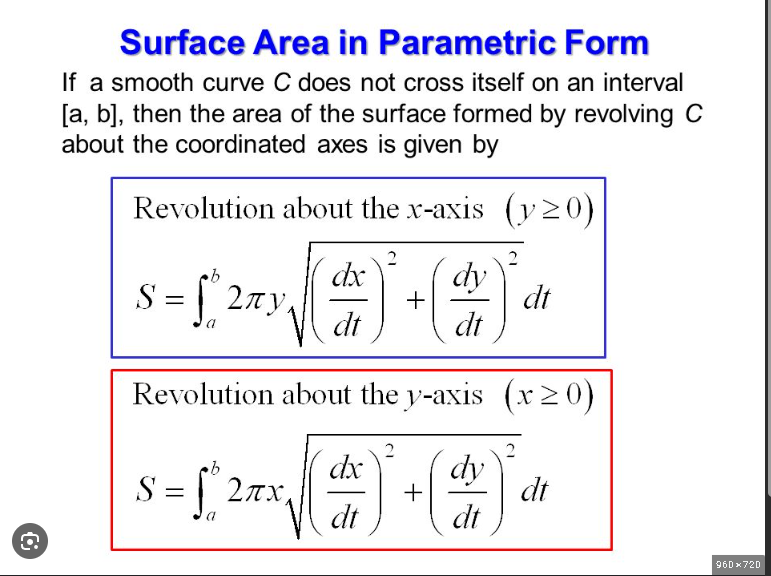
Translating Polar and Cartesian
y = r*sin(theta)
x = r*cos(theta)
r = x² + y², theta = tan-1(x/y)
Shape of Polar Equations
Cardioids: Anything with a -/+, is a cardioid, sin ones go up and down cos ones go left and right. Sign indicates where the long end goes, so if its a - acos the long end points in the -x direction.
Circles: In the form 2acos, or just r = a, with center at x = a if cos and y = a if sin
Rose Curves: In the form a trig (ntheta). If n is even, has 2n petals. If odd, has n petals
Area of Polar Curves
For cardioids and circles range is 0 to 2pi, for rose curves set r =0 and solve to find bounds for one petal, then if problem asks for whole area multiply by amount of petals.
